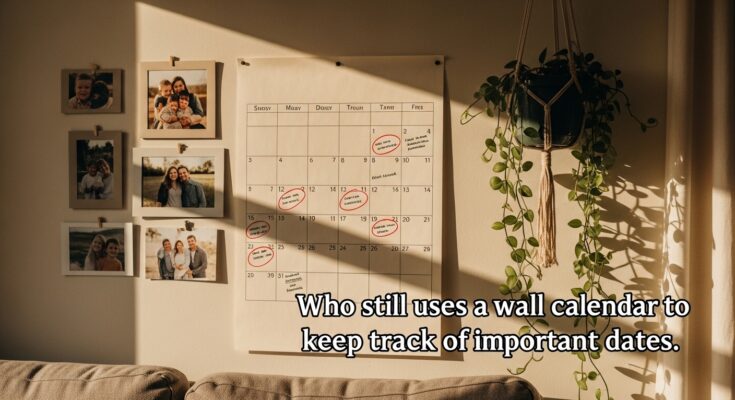In an era dominated by smartphones, smartwatches, and countless productivity apps, it may seem surprising that some people still cling to the humble wall calendar. With reminders, alarms, shared calendars, and AI-powered planners available at our fingertips, why would anyone bother with a piece of paper hung on a wall? Yet, the answer is both practical and sentimental. Wall calendars, it turns out, continue to serve a unique purpose in our lives, connecting us to time in a way that digital devices sometimes cannot.
For many, a wall calendar is more than just a tool for organization—it’s a visual anchor. Unlike a phone screen, which requires swiping, scrolling, or opening an app, a wall calendar offers an immediate, at-a-glance overview of the month, week, or year. The simple act of glancing at the wall to see birthdays, appointments, and deadlines can reduce cognitive load and prevent “calendar fatigue.” In busy households or offices, a wall calendar serves as a shared reference point, ensuring everyone is on the same page. It’s hard to argue with the practicality of a calendar hung in the kitchen, living room, or office space, where it can silently organize daily life without constant notifications or battery dependence.
The tactile experience of writing on a wall calendar also holds significance for many users. Handwriting a birthday, a dentist appointment, or a vacation date can reinforce memory and make planning feel more intentional. Studies in cognitive science suggest that writing things down by hand improves recall and engagement, an advantage digital planners can’t fully replicate. For those who appreciate the physicality of pen on paper, the wall calendar becomes a bridge between mind and action, allowing them to interact with their schedule in a meaningful, almost meditative way.

Aesthetic appeal also plays a role. Unlike digital apps, wall calendars can be beautifully designed, often featuring photography, artwork, or inspiring quotes. Many people choose calendars that reflect personal interests—whether it’s scenic landscapes, famous artwork, or beloved fictional characters. A wall calendar can become part of a room’s décor, providing visual pleasure throughout the year. Each turn of the month brings a small sense of excitement and change, something that a digital screen cannot replicate. In some households, selecting the yearly calendar is an anticipated ritual, marking the beginning of a new chapter with art and organization combined.
Moreover, wall calendars have social and communal value. In families, the kitchen calendar is often the hub for coordination, where parents mark school events, extracurricular activities, and family gatherings. Kids can participate by adding their own notes or stickers, fostering responsibility and awareness of time. In offices, shared calendars on the wall help teams quickly understand deadlines, meetings, or project milestones without requiring everyone to log into a software platform. There’s something inherently collaborative about a physical calendar—it encourages communication and visibility in a way that private, app-based systems sometimes hinder.
It’s worth noting that wall calendars often serve as a nostalgic link to the past. Older generations grew up with them, and for many, they evoke memories of childhood, home life, and simpler ways of managing time. Even in a digital world, these calendars carry a charm that technology can’t replicate. They remind us that organization doesn’t always need to be complex; sometimes, simplicity is powerful.

Of course, not everyone relies on wall calendars. Many have fully embraced digital alternatives for their convenience, portability, and automation. But for those who use wall calendars, it’s clear they are not just resisting technology—they are enhancing their lives in subtle, meaningful ways. They enjoy the visual clarity, tactile engagement, aesthetic pleasure, communal benefits, and nostalgic resonance that a wall calendar provides. In a world where we are constantly bombarded by screens, there is something comforting about a large, physical calendar, providing a sense of control and permanence that digital devices can rarely match.
So, who still uses a wall calendar? The answer is anyone who values visibility, tangibility, and beauty in organization. It’s people who want to see their year unfold at a glance, who enjoy marking their days by hand, and who find satisfaction in the rhythm of flipping a page. It’s families, creative individuals, office teams, and those who simply refuse to let go of a simple, elegant tradition. Wall calendars might seem old-fashioned to some, but for many, they remain an indispensable companion—a reminder that sometimes, the simplest tools are the ones that serve us best.

